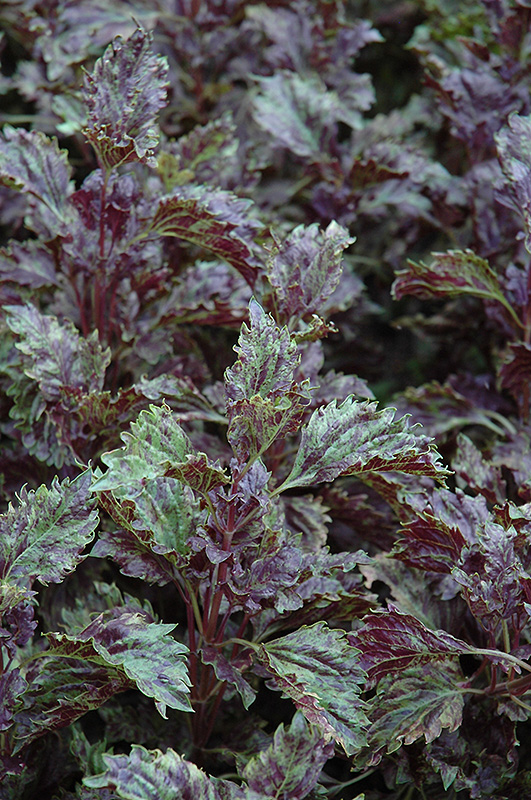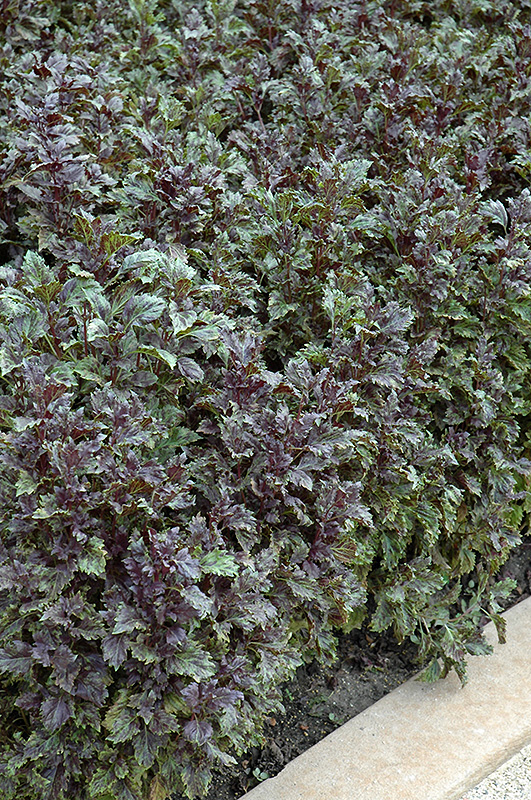>> Home
Red Frills Basil
Ocimum basilicum 'Red Frills'
Height: 24 inches
Spacing: 18 inches
Sunlight:
![]()
Hardiness Zone: (annual)
Description:
A dense colorful variety, producing frilly lobed leaves that are splashed with dark red variegation; great for mixed containers and massing in beds and borders
Edible Qualities
Red Frills Basil is an annual herb that is commonly grown for its edible qualities, although it does have ornamental merits as well. The fragrant lobed green leaves with showy dark red variegation are usually harvested from early summer to early fall. The leaves have a pleasant taste and a distinctive fragrance.
The leaves are most often used in the following ways:
- Fresh Eating
- Cooking
- Seasoning
Planting & Growing
Red Frills Basil will grow to be about 24 inches tall at maturity, with a spread of 24 inches. When grown in masses or used as a bedding plant, individual plants should be spaced approximately 18 inches apart. This fast-growing annual will normally live for one full growing season, needing replacement the following year.
This plant is quite ornamental as well as edible, and is as much at home in a landscape or flower garden as it is in a designated herb garden. It should only be grown in full sunlight. It prefers to grow in average to moist conditions, and shouldn't be allowed to dry out. It is not particular as to soil type or pH. It is somewhat tolerant of urban pollution. This is a selected variety of a species not originally from North America. It can be propagated by cuttings; however, as a cultivated variety, be aware that it may be subject to certain restrictions or prohibitions on propagation.
Red Frills Basil is a good choice for the edible garden, but it is also well-suited for use in outdoor pots and containers. It can be used either as 'filler' or as a 'thriller' in the 'spiller-thriller-filler' container combination, depending on the height and form of the other plants used in the container planting. It is even sizeable enough that it can be grown alone in a suitable container. Note that when growing plants in outdoor containers and baskets, they may require more frequent waterings than they would in the yard or garden.

